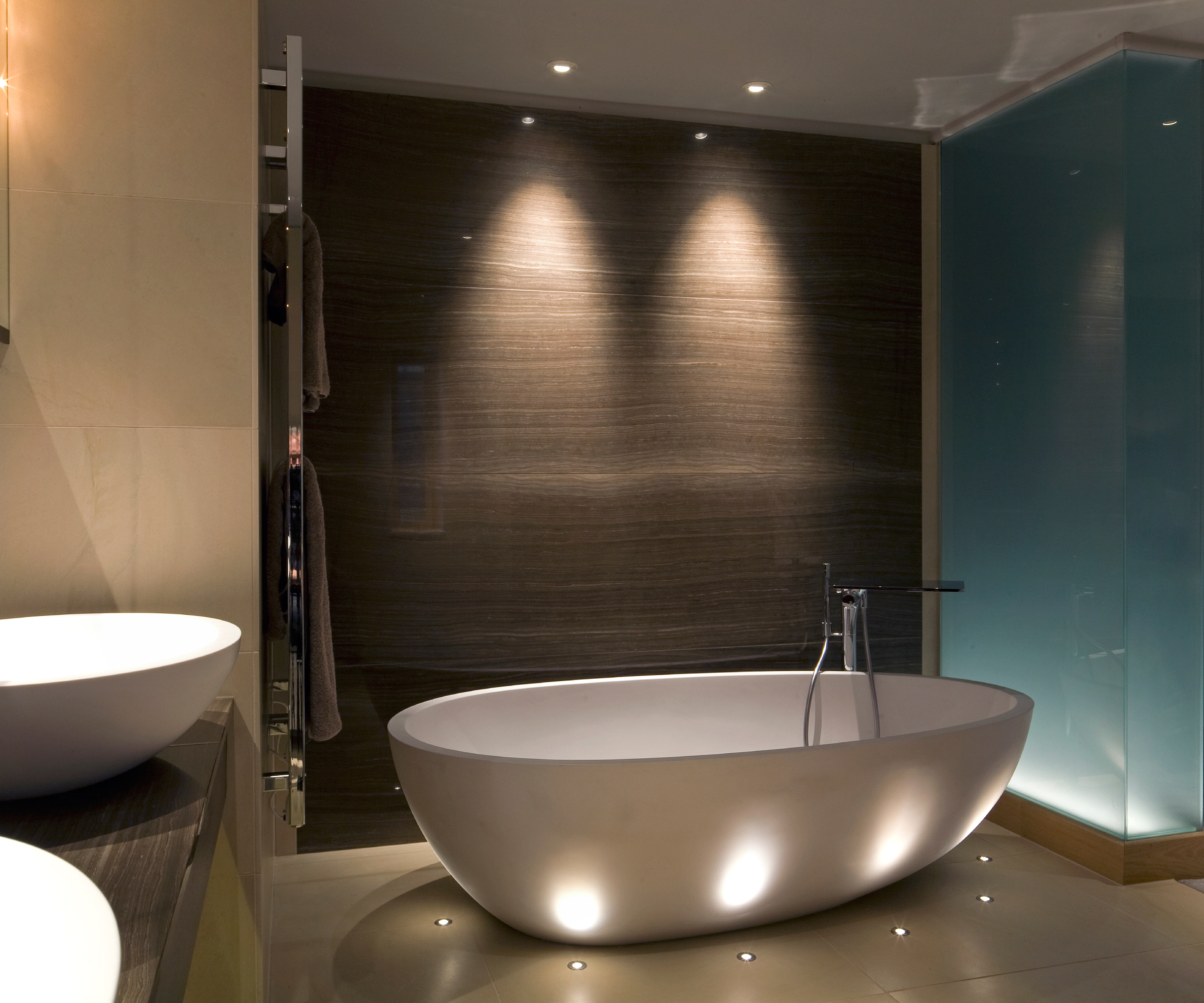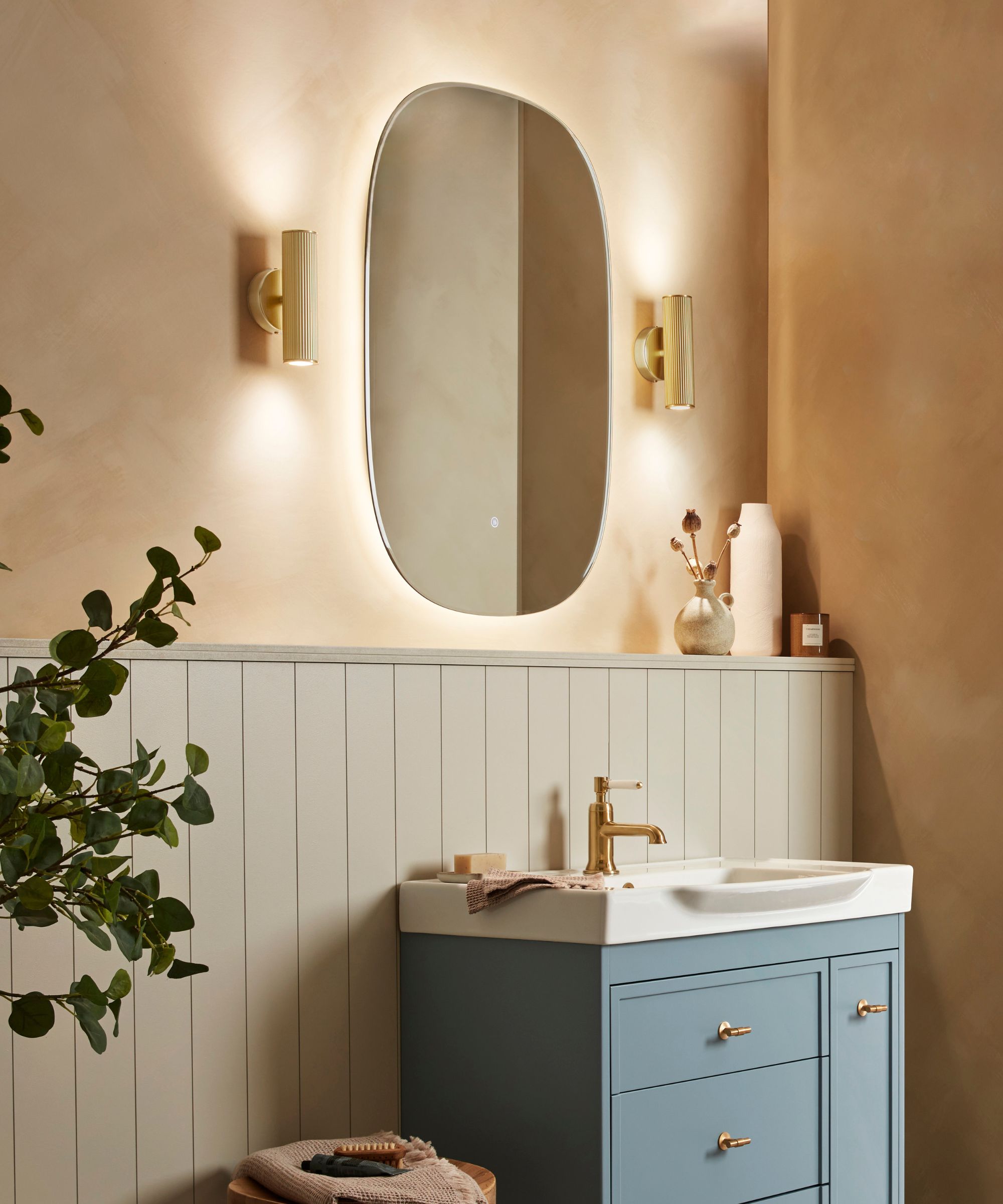Stop making these 10 bathroom lighting mistakes if you want a beautifully illuminated space
Experts reveal the most common bathroom lighting mistakes homeowners make and how to avoid them

Bathroom lighting is often an afterthought, but get it wrong, and it can undo all the careful planning that’s gone into your bathroom design. Too harsh, and it strips away any sense of relaxation; too dim, and you’ll struggle with everyday tasks. Striking the right balance is the key to creating a space that works for you and your home.
Today’s bathrooms are expected to do it all: they’re where we prepare for the day ahead and unwind when it’s done. That versatility calls for thoughtful lighting choices that cater to both roles simultaneously – without falling into common traps that can leave your space feeling anything but functional or inviting.
To help you avoid these missteps, we asked bathroom specialists to uncover the most frequent lighting mistakes they see and offer their advice on how to get it right.
1. Ignoring Safety with IP Ratings
According to Katerina Tchevytchalova, director of interior design studio K'Arte Design,"One of the most serious lighting mistakes you can make is using fixtures without the correct IP (Ingress Protection) rating. "It can lead to electrical hazards and reduced durability," she cautions.
This is because bathrooms are high-moisture environments, and fixtures not designed for these conditions can fail prematurely or even become dangerous over time.
The Solution: Always choose fixtures with an IP rating appropriate for their zone. For wet areas, such as inside a shower, select fittings with a higher IP rating for safe and long-lasting use.

Before launching her practice, Katerina worked in a number of design companies in London including 5 years at Kelly Hoppen Interiors.
2. Choosing the Wrong Colour Temperature
Getting the colour temperature right in a bathroom is a must if you want to create a space that’s both functional and inviting. Harsh cool tones can feel clinical, while overly warm lighting may not provide the clarity needed for every day tasks.
"I recommend 3,000–3,500K for a neutral white light," says Katerina Tchevytchalova. "This avoids the harshness of 4,000K or the overly yellow tone of under 2,700K, which isn’t ideal for grooming."
Alex Woods, bathroom expert at Victorian Plumbing, agrees and suggests tailoring cool vs warm light to the space’s purpose. "Cool white lighting is perfect for task zones like the vanity, while warmer tones create a spa-like feel for ambient areas."
The Solution: Opt for a neutral white light (3,000–3,500K) for the best balance between task lighting and ambience. Be consistent with colour temperatures across fixtures to create a cohesive look.

Alex is a marketing manager at Victorian Plumbing, a major online bathroom and kitchen retailer based in Merseyside, UK.
3. Relying Solely On Overhead Lights

Overhead lighting may seem like a practical choice, but it often falls short in a bathroom. "One of the most common lighting design mistakes is relying exclusively on overhead lighting," says Alex Woods. "It can create harsh shadows and uneven illumination, especially around the vanity." This can make everyday tasks like grooming more difficult and leave the space feeling stark and uninviting.
Katerina Tchevytchalova agrees, noting that "ceiling spotlights can feel uninviting and unsuitable for various tasks." She suggests adding wall sconces or LED accents to soften the overall scheme.
The Solution: Avoid relying solely on overhead lighting by adding fixtures that brighten specific areas and improve the overall atmosphere of the space.
4. Not Layering Your Bathroom Lighting
At first glance, this mistake might seem similar to relying solely on overhead lighting, but there's more to layered lighting than just adding fixtures.
"Effective layering involves creating 'zones' with your light," explains Alex Woods. "Use task lighting for functional areas like the vanity, softer ambient lighting for relaxation, and accent lighting to highlight architectural features or niches." Without this thoughtful mix, bathrooms can feel flat and uninspired.
When planning your layered lighting, you should also take into account the bathroom’s finishes. Reflective surfaces like glossy tiles or mirrors can bounce light beautifully, while matte finishes may require a bit more illumination to keep the space feeling bright and welcoming.
The Solution: Think beyond individual lights. Blend task, ambient, and accent lighting by incorporating LED strips under vanity units or inside niches.
5. Forgetting to Incorporate Dimmable Lights
Another common mistake is overlooking the power of dimmer switches to transform a bathroom's ambience. Without them, you lose the flexibility to adapt your bathroom lighting to different needs, whether it’s bright task lighting for busy mornings or a calming, low-lit atmosphere for evening relaxation.
"Dimmers give you control over your lighting throughout the day," Alex Woods explains. "Brighter settings are ideal for practical tasks, while dimmed lighting creates a calming ambience that’s perfect for winding down."
The Solution: Install dimmer switches on your main light fixtures to gain full control. For ceiling lights, opt for dimmable LED bulbs that offer a broad range of brightness without compromising energy efficiency. Just make sure you look for dimmer switches that are compatible with your bulbs to avoid flickering. If you’re unsure, consult a lighting specialist or choose a smart dimmer system that pairs with an app for added ease of use.

This WIFI compatible pull cord dimmer switch is designed to be compatible with Alexa, Tuya, Smart Life, LIDL Home, BG, and Ledvance.
6. Neglecting Task Lighting For Mirrors

"Poorly placed task lighting around mirrors is another common oversight," says Alex Woods. "Light fixtures should flank the mirror or be positioned above it with proper diffusion to eliminate shadows on the face." This is particularly important for up close activities, like shaving or applying makeup.
The Solution: Vertical wall sconces work beautifully to diffuse light evenly, but back-lit mirrors are a smart alternative when sconces aren’t an option.
Light Up Bathroom Mirrors

This round, LED bathroom mirror with built-in Bluetooth, features an anti-fog function and adjustable brightness settings - perfect for grooming and applying makeup.
7. Using The Wrong Type of Bulb
Using the wrong bulbs in your bathroom is a quick route to frustration. Flickering lights or bulbs that burn out too soon are common problems when you’re not using the right type of light bulb.
In damp environments like bathrooms, standard bulbs often don’t hold up, leaving you with poor lighting and constant replacements. The best LED bulbs are a game-changer here. Not only are they energy-efficient and long-lasting, but they also come in a range of brightness levels and colour temperatures to suit your needs. Just make sure you choose ones designed for bathroom use and compatible with your fixtures.
The Solution: Swap out standard bulbs for moisture-resistant LED options. They’ll last longer, save energy, and keep your bathroom beautifully lit.
8. Overlooking Lights in Showers and Wet Areas

Many homeowners shy away from lighting showers and wet areas due to concerns about safety, but this often leaves these spaces feeling dim and disconnected from the rest of your space. Thankfully, with careful planning and the right fixtures, you can safely and effectively illuminate these bathroom zones.
IP65-rated fixtures are specifically designed for wet zones, offering protection against splashes and even direct water jets. Recessed downlights are a popular option, but wall-mounted fixtures, positioned just outside the shower, can also project light into the area without direct exposure to water.
For a design-forward touch, try installing LED strip lights in niches or along the shower perimeter for soft, even illumination. For something more unique, consider showerheads with built-in LED lights.
The Solution: Safely light wet areas with IP65-rated fixtures, wall-mounted lighting, or creative options light-up showerheads..
Enhance Wet Bathroom Zones With Shower Lights

This round LED chrome shower handset lights up in three different colours depending on the temperature of the water.
9. Failing to Account for Natural Light

Windows and skylights are great sources of daylight, but many homeowners miss the chance to enhance this light and let it shine throughout their space. Without planning, even a bathroom with natural light can feel dim or underwhelming, especially on cloudy days or after sunset.
The Solution: If your bathroom has a window or skylight, make the most of it! Position mirrors strategically to reflect natural light around the room, instantly brightening the space. To keep your bathroom well-lit at all hours, pair natural light with versatile fixtures that balance daylight during the day and provide soft, even lighting at night.
10. Ignoring your specific layout
Every bathroom is different, and ignoring your room’s unique layout can lead to poorly lit areas and wasted potential. Unusual angles or tight spaces can create dark spots if lighting isn’t planned thoughtfully.
"Wall-mounted, adjustable light fixtures are ideal for small bathrooms and irregular layouts," explains Alex Woods from Victorian Plumbing. "They let you direct light where it’s needed most, solving issues caused by awkward nooks or angles." Reflective surfaces like tiles or mirrors can also help amplify light, making the space feel brighter and more open.
The Solution: Embrace your bathroom’s quirks by using adjustable lighting and reflective surfaces to brighten every corner and make the most of the space you have.
Another area where lighting often goes wrong is the kitchen. Avoid common kitchen lighting mistakes by planning ahead and understanding basics like layering and placement.
Get the Homebuilding & Renovating Newsletter
Bring your dream home to life with expert advice, how to guides and design inspiration. Sign up for our newsletter and get two free tickets to a Homebuilding & Renovating Show near you.

Gabriella is an interiors journalist and has a wealth of experience creating interiors and renovation content. She was Homebuilding & Renovating's former Assistant Editor as well as the former Head of Solved at sister brand Homes & Gardens, where she wrote and edited content addressing key renovation, DIY and interior questions.
She’s spent the past decade crafting copy for interiors publications, award-winning architects, and leading UK homeware brands. She also served as the Content Manager for the ethical homeware brand Nkuku.
Gabriella is a DIY enthusiast and a lover of all things interior design. She has a particular passion for historic buildings and listed properties, and she is currently in the process of renovating a Grade II-listed Victorian coach house in the West Country.




